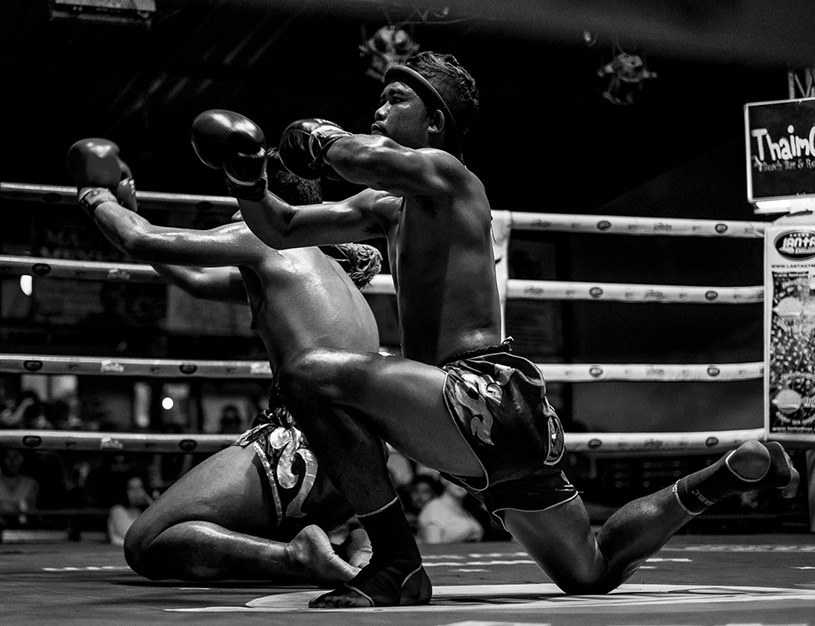The profound echoes of an ancient martial art, Muay Thai, continue to reverberate through the corners of modern combat sports. A battlefield born fighting style, Muay Thai holds a history as intense as its practice, having transitioned from the brutal arenas of Siam to the neon-lit rings of global sport. This compelling tale of survival, adaptation, and evolution deserves an exploration.
Delving into the roots of Muay Thai, we find ourselves in the midst of Siamese warriors preparing for battle. Armed not with swords or spears, but with their own bodies, they developed a martial art form as lethal as any weapon. The birth and growth of Muay Thai, woven into the tapestry of Thailand’s history, is a fascinating journey that would captivate any enthusiast.
This detailed examination traces the martial art’s remarkable ascension from ancient battlegrounds to a globally recognized sport. Muay Thai’s metamorphosis has not only shaped the sporting landscape but also impacted cultures and individuals far beyond its birthplace. The appeal of its ferocious techniques, rigorous discipline, and strategic depth has resonated with millions worldwide, making it a phenomenon in the world of martial arts.
In the paragraphs to follow, the historical origins of Muay Thai in ancient Siam and its evolution into a globally recognized sport will be meticulously unraveled. From the ancient battlegrounds to the global stage, the riveting journey of Muay Thai is one of triumph and determination that will keep you on the edge of your seat. Stay tuned as we dive deep into the story of this martial art’s ascent and explore its vibrant present-day implications.
Origins of Muay Thai in Ancient Siam
Muay Thai, also known as the ‘Art of Eight Limbs,’ has a long and distinguished history. Its roots are deeply embedded in the ancient kingdom of Siam, now known as Thailand. Here, it was developed as a battlefield technique for Siamese soldiers, who utilized the combat style when they were disarmed during war.
To understand the depth of its roots, one needs to journey back to the middle of the 16th century, during the Ayutthaya Kingdom era. In this period, Siamese soldiers were trained in hand-to-hand combat. This martial art was then known as Krabi Krabong. With its emphasis on utilizing the entire body as a weapon, this fighting technique was the precursor of modern-day Muay Thai.
Role of Muay Thai in Siamese Society
In ancient Siam, Muay Thai was more than just a martial art. It was deeply interwoven with the fabric of Siamese society, as it held significant religious and cultural value. The fighters, known as Nak Muay, would perform a dance ritual, known as Wai Kru, before each fight to pay respects to their teachers and ancestors.
- Wai Kru: This pre-fight ritual consists of specific movements and gestures, which are accompanied by traditional music. It is believed to bring good luck and protection to the fighter.

Evolution of Muay Thai
Over the centuries, Muay Thai underwent significant changes. It evolved from a battlefield technique to a popular form of entertainment for the Siamese aristocracy. By the 19th century, during the reign of King Chulalongkorn, it gained the status of a national sport.
The transformation of Muay Thai into a sport led to the introduction of rules and regulations, as well as the development of equipment such as gloves and protective gear. This period also saw the establishment of formal training camps, where aspiring fighters could learn and refine their skills.

Global Recognition of Muay Thai
The 20th century brought about the international recognition of Muay Thai. Thai fighters started to compete in international arenas, showcasing their skills and the unique fighting style of Muay Thai.
In 1993, the International Federation of Muay Thai Amateur (IFMA) was established, marking a significant milestone in Muay Thai’s journey as a global sport. IFMA’s mission was to promote and support Muay Thai worldwide, and it was successful in gaining recognition for the sport from major international sports organizations.
Muay Thai Today
Today, Muay Thai is recognized and practiced globally, with a large number of international competitions and tournaments taking place each year. It’s not just seen as a sport, but also a form of fitness and self-defense.
It is important to note that the core values of respect, honor, and tradition that were instilled in the ancient Siamese fighters are still very much alive in the modern practice of Muay Thai. This highlights the deep cultural significance of the sport and its continued relevance in today’s world.
Conclusão
In conclusion, the ascension of Muay Thai, from its inception as a battlefield technique in ancient Siam to its current standing as a globally recognized sport, is a compelling narrative steeped in tradition, honor, and respect. Its roots, deeply entrenched in the cultural fabric of Siamese society, continue to imbue the practice with profound significance, going beyond the physical realm to touch on aspects of spirituality and identity. The journey of Muay Thai, with its transition from Krabi Krabong, to a popular form of entertainment, then a national sport, and finally gaining global recognition, mirrors the adaptability and resilience intrinsic to this martial art. Today, Muay Thai stands not only as a testament to the combat skills of ancient Siamese soldiers but also serves as a symbol of Thai heritage and cultural pride. The core values embedded in its practice, such as respect and honor, continue to resonate, underscoring the timeless appeal of this ancient art form. From local gyms in Thailand to global sports arenas, Muay Thai’s influence remains far-reaching, impacting the fields of fitness, self-defense, and competitive sports, proving its enduring relevance in the modern world.

